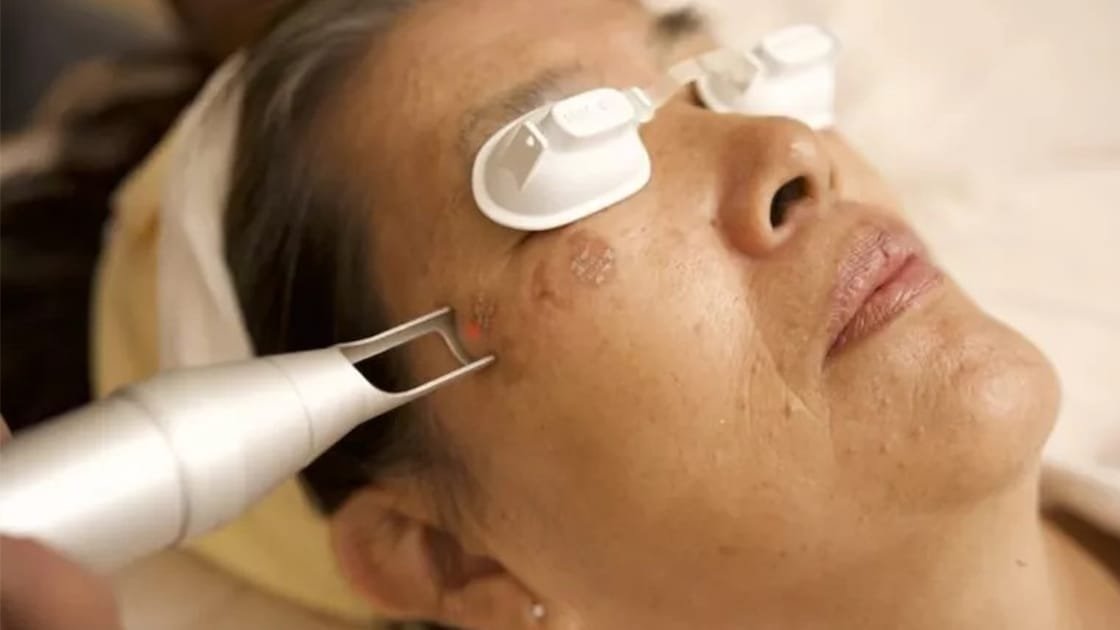Hyperpigmentation is a skin condition where excess melanin causes discoloration or dark spots, often due to sun exposure, aging, or inflammation. It affects many individuals, leading to a demand for effective treatments. Among the various solutions, lasers stand out as powerful tools in the fight against hyperpigmentation. Two prominent technologies — Erbium and Pico lasers — are often compared in terms of their effectiveness, precision, and treatment outcomes. But which one is truly superior when it comes to tackling hyperpigmentation? Let’s break down these two laser types and their capabilities.
What is Erbium Laser?
The Erbium laser is a type of fractional laser commonly in skin resurfacing. It works by emitting concentrated light energy that is absorbed by water in the skin. This absorption causes controlled, precise micro-injuries that promote the skin’s natural healing process, resulting in rejuvenation. Erbium laser is particularly effective for addressing superficial skin concerns, such as fine lines, sunspots, and other pigmentation issues.
Erbium laser technology operates in the infrared spectrum, providing a specific wavelength that targets water molecules in the skin, which is key for effective skin resurfacing. The high precision of the Erbium laser allows for careful exfoliation of the outer skin layers, reducing hyperpigmentation caused by surface-level damage. This treatment is beneficial for individuals with lighter skin types who are seeking more subtle, controlled results.
What is Pico Laser?
Pico lasers, including the DualPico Laser, represent the cutting edge of non-ablative laser technology. Unlike traditional lasers, which rely on heat to break down pigmentation, Pico lasers work by delivering ultra-short pulses of energy in the picosecond range (one trillionth of a second). This rapid delivery of energy creates a photoacoustic effect that shatters pigmentation into smaller particles, which are then naturally eliminated by the body.
Pico lasers are commonly used for deeper skin treatments, addressing conditions like melasma, sunspots, and even tattoos. The beauty of Pico lasers lies in their ability to treat darker skin types and deeper layers of pigmentation without causing thermal damage. It can target both the epidermis and dermis, which makes it a powerful tool for individuals dealing with stubborn pigmentation that may not respond well to traditional treatments like Erbium.
How Erbium and Pico Lasers Treat Hyperpigmentation
Both Erbium and Pico lasers are effective for treating hyperpigmentation, but they target the skin differently. Erbium lasers are most effective for treating surface-level pigmentation, such as age spots or sun damage. The laser creates micro-injuries to the epidermis, encouraging the skin to regenerate and replace damaged cells with healthier ones. This is ideal for treating mild to moderate pigmentation.
In contrast, Pico lasers work by using the high-speed pulses to target deeper layers of the skin. By breaking down pigment particles in the dermis, Pico lasers are better suited for treating more persistent or deeper pigmentation, including melasma, post-inflammatory hyperpigmentation, and other chronic skin discolorations. The energy delivered by Pico lasers penetrates deeper into the skin layers without causing significant damage, resulting in faster healing and less risk of scarring.
Treatment Differences: Erbium vs. Pico
1. Pain Level
Both Erbium and Pico lasers are relatively comfortable compared to other treatments like chemical peels. However, Erbium laser treatments may cause more discomfort due to its resurfacing nature, which involves removing parts of the skin’s surface. A numbing cream is typically applied prior to treatment to help alleviate discomfort.
Pico laser treatments are generally more comfortable because the technology relies on ultra-fast pulses rather than heat. The shorter treatment times and less invasive nature of Pico lasers make them ideal for individuals who want minimal discomfort during their treatment sessions.
2. Treatment Duration
Erbium treatments are often longer due to the resurfacing process. A single session can take anywhere from 30 minutes to an hour, depending on the treated area.
Pico laser treatments, on the other hand, are quicker, with sessions typically lasting around 20 to 30 minutes. The speed of the treatment, along with minimal downtime, makes it a great option for busy individuals looking for fast results with little disruption to their daily routine.
3. Recovery Time
Erbium laser treatment generally requires more downtime due to its resurfacing nature. Post-treatment, the skin may appear red and swollen, and there can be some peeling as the skin heals. Recovery typically takes about 5 to 7 days.
Pico laser has a shorter recovery time, with most people experiencing only slight redness or swelling after treatment. Since Pico lasers are non-ablative, the skin heals quickly, and normal activities can usually be resumed within 1 to 2 days.
4. Number of Sessions
For Erbium lasers, multiple sessions may be required to achieve optimal results, especially for deep pigmentation. On average, 3 to 5 sessions are necessary, depending on the severity of the pigmentation.
With Pico lasers, most individuals see noticeable results after 1 to 3 sessions, especially when treating stubborn or deep pigmentation. The precise action of Pico lasers often leads to faster outcomes compared to Erbium lasers.
Side Effects: Comparing the Risks
Both treatments are safe, but Erbium laser treatments may carry a slightly higher risk of side effects, such as scarring, pigmentation changes, or prolonged redness due to the deeper penetration of the laser. This is typically associated with incorrect aftercare or improper treatment settings.
Pico laser treatments are generally safer, with minimal risk of side effects like scarring or hyperpigmentation. The non-ablative nature of the Pico laser significantly reduces the risk of damage to the skin’s surface layers.
Which Laser is Better for Different Skin Types?
Erbium lasers are most effective for individuals with fair to medium skin tones and more superficial pigmentation. The precision of the Erbium laser allows for safe treatment of lighter skin types without causing excess damage.
For individuals with darker skin tones, or those struggling with deeper, more resistant pigmentation (like melasma), Pico lasers are the preferred choice. Due to their ability to treat deeper layers of skin without excessive heat, they minimize the risk of post-inflammatory hyperpigmentation, which is a concern with traditional lasers.
Conclusion: Which Laser Reigns Supreme?
Both Erbium and Pico lasers offer distinct advantages when it comes to treating hyperpigmentation, with each laser being more effective depending on the condition and skin type.
If you’re dealing with surface-level pigmentation and prefer a more precise, resurfacing approach, the Erbium laser may be the best option for you. However, for individuals with darker skin tones, deeper pigmentation, or those looking for faster recovery times, Pico lasers offer a powerful, safe alternative.
Ultimately, the choice between Erbium and Pico depends on your specific skin needs, and a consultation with a professional will help determine which treatment is right for you.








